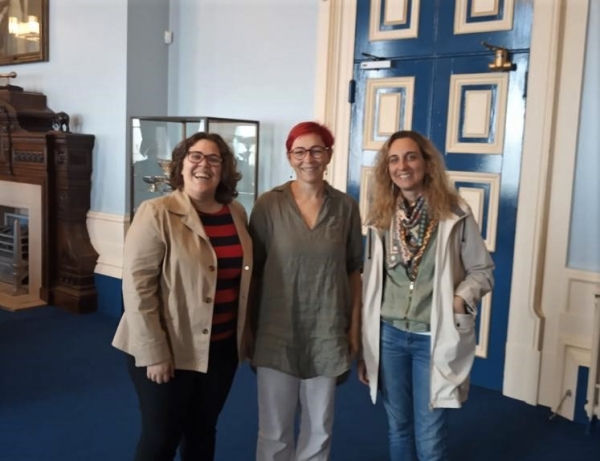It is not unusual to come across people who, after having studied English for several years in school, are unable to carry on a conversation in that language. This is due to the fact that language teaching has usually focused on less communicative aspects such as grammar and vocabulary learning in a way that lacks context. Bilingual education came into effect for the purpose of improving students’ communicative skills in foreign languages by means of learning a new language using real contexts.
In Europe, bilingual education is based on the CLIL approach (Content and Language Integrated Learning) which uses the foreign language as a tool to learn content and, at the same time, improve language learning by means of that content. This approach is not learning a language as a separate subject, but rather uses that language in each of the other subjects as a means of communication with which to explain concepts, in an interdisciplinary way between linguistic subjects and non-linguistic subjects being taught.
In order to continue progressing in the design of new educational strategies for the CLIL approach, the University of Cordoba is taking part in the international project called FRAMING CLIL that, along with integrated learning of a foreign language and mathematical subject matter, is integrating a new facet: gamification, a learning technique consisting of using a leisure component in order to improve understanding of the concepts being taught. In this project, centers in the UK, Italy, Belgium and Austria are also taking part, each with its own very different educational and linguistic contexts. FRAMING CLIL is funded by the European Union through the Education, Audiovisual and Culture Executive Agency as part of the program Erasmus + (KA203 Strategic Partnerships for Higher Education).
The main aim of Project FRAMING CLIL is to design a multilingual videogame, based on the principles of the CLIL approach, to be used in learning mathematical content related to fractions by means of a foreign language, which in the case of Spain is English. In addition, training material will be created for teachers that participate in the project by trying out the videogame. Taking part in this project are University of Cordoba researchers Natividad Adamuz Povedano and Elvira Fernández de Ahumada, both at the Mathematics Education Department, and researcher Cristina A. Huertas Abril, from the Department of English and German.
The videogame being developed is divided into six mini games that deal with different aspects of calculating fractions, such as adding or multiplying. In order to do so, a story was created that is the main thread throughout the game, in which there is emphasis on certain linguistic features identified as the most complex for students and the idea is to make it easier to understand them by means of several strategies, such as the use of synonyms.
What is more, these mini games can be played individually. "If the teacher or the student detects a need to reinforce a specific aspect of calculating fractions, it is possible to go to one of the mini games without having to go through the whole story", says researcher Cristina Huertas.
The choice of fractions as the mathematical content to get this project going was not a random one. "It is an aspect that can be more challenging for students than other subject matter and there are few games developed for learning fractions, unlike the case of Geometry, for example", explains the researcher in charge of the project, Natividad Adamuz. Besides, fractions are subject matter that is taught at the same age in all of Europe, around the age of 12, so when working with other countries that fact was very useful.
The idea of the videogame is to go beyond mere procedural learning of basic math problems with fractions, helping to understand what they are and what they are for. According to researcher Elvira Fernández, "visual and graphic displays of fractions help to facilitate this understanding and allow students to learn in a more intuitive way".
Combining language learning, mathematical content and gamification is something that, a priori, could be a successful combination for learning and could be extrapolated to other mathematical content, and even to other subjects in bilingual education.
The FRAMING CLIL project - “Gamifying CLIL within a mathematics context” (2018-1-UK01-KA203-048071) is funded by the European Union through the ERASMUS+ KA203 CALL 2019. Further information: https://www.mmu.ac.uk/education/framingclil/
This report is part of the communication strategy of the International Project Office in order to spread the word about international projects granted to the University of Cordoba.


